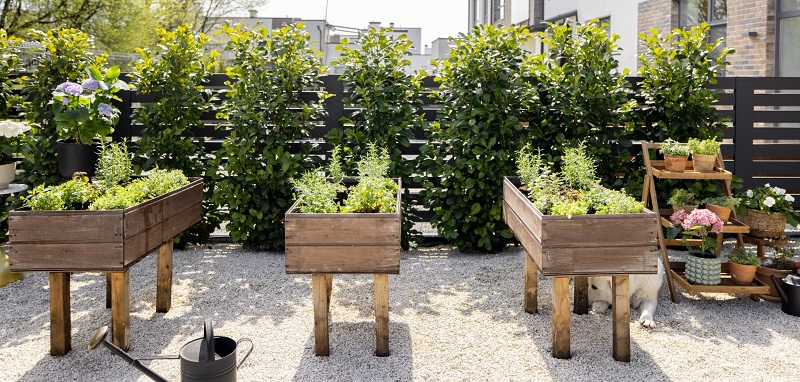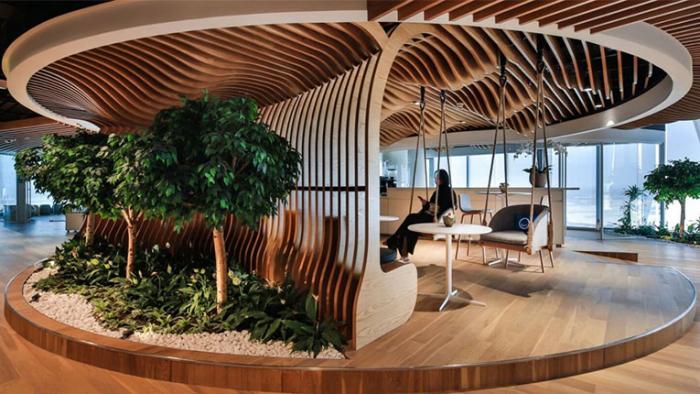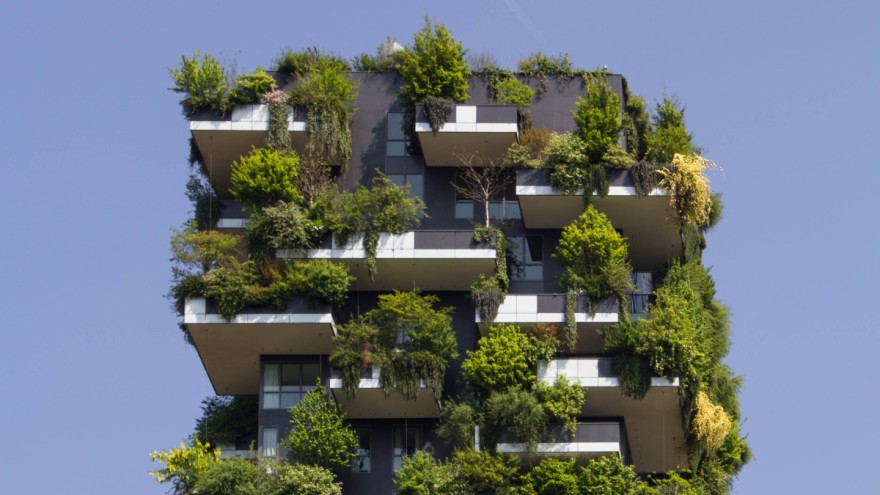Creating Serene Spaces: Exploring Sensory Gardens in Urban Environments
In the dynamic environment of urban life, sensory gardens offer a distinctive oasis, providing a variety of benefits that contribute to both mental well-being and physical health.
These gardens engage individuals’ senses through the careful selection of plants, textures, and sounds, thereby promoting relaxation and encouraging active lifestyles.
This discussion will examine the design elements that render these spaces effective, present inspiring examples from various locations worldwide, and address the challenges associated with establishing these essential green havens in urban settings.
The potential of sensory gardens to transform urban environments into thriving, sensory-rich retreats will be thoroughly explored.
Benefits of Sensory Gardens in Urban Environments
Sensory gardens are distinctive spaces specifically designed to engage individuals through a variety of sensory experiences, rendering them vital components of urban environments.
These therapeutic gardens promote mental health and well-being by providing restorative spaces that stimulate the senses, including sight, smell, touch, taste, and sound.
Furthermore, they enhance biodiversity by creating habitats for urban wildlife and contribute to community areas that foster social interaction and a connection with nature.
As urban areas become increasingly congested, these green infrastructures serve as essential retreats for relaxation, mindfulness, and environmental education.
1. Promotes Mental Health and Well-being
Sensory gardens play a vital role in promoting mental health and well-being by offering a tranquil environment that facilitates nature therapy and sensory stimulation through various interactive elements.
These gardens typically include tactile features such as textured pathways and raised beds, which enable individuals to physically engage with the landscape. Aromatic plants, such as lavender and rosemary, stimulate the sense of smell, fostering relaxation and alleviating stress. Additionally, auditory elements, such as the gentle sounds of flowing water or wind chimes, contribute to a calming atmosphere that supports mindfulness practices.
Research consistently indicates that time spent in these therapeutic gardens can lead to reduced anxiety and enhanced mood. For example, several case studies have documented significant decreases in PTSD symptoms among veterans who regularly engaged in gardening activities within these enriched environments, underscoring their substantial impact on emotional healing.
2. Encourages Physical Activity
Sensory gardens serve as a catalyst for physical activity by establishing inviting community spaces that promote movement and exploration, ultimately contributing to healthier lifestyles.
These thoughtfully designed environments typically include winding nature trails that encourage visitors to walk, jog, or leisurely stroll, thereby fostering a connection with the natural world.
Interactive features, such as raised garden beds and tactile installations, engage individuals in hands-on gardening activities, rendering the experience both educational and enjoyable.
Furthermore, with designated areas for outdoor classrooms, these gardens become essential resources for schools and community organizations, providing engaging opportunities for learners of all ages.
Participants can plant seeds, observe growth cycles, and develop a deeper appreciation for nature while remaining physically active.
3. Provides Educational Opportunities
Sensory gardens present valuable educational opportunities that promote environmental awareness and horticultural knowledge for individuals of all ages, including specialized areas designed for children.
These interactive environments serve as an exceptional setting for a variety of programs, including guided nature walks, hands-on gardening workshops, and eco-themed storytelling sessions.
By actively involving participants in activities such as planting seeds, caring for plants, and observing wildlife, these gardens facilitate immersive experiences that are vital for cognitive development.
Engagement with the natural world enhances understanding of ecosystems, emphasizes the significance of biodiversity, and fosters awareness of sustainable practices.
The sensory elements found within these gardens—such as aromatic herbs, textured leaves, and vibrant colors—effectively stimulate the senses, thereby making the learning process both enjoyable and memorable.
4. Improves Air Quality
Sensory gardens play a crucial role in enhancing air quality within urban environments by promoting urban biodiversity and fostering environmental sustainability through green infrastructure.
These gardens provide a tranquil refuge for city residents while incorporating a diverse array of plants that effectively filter pollutants and carbon dioxide, thereby improving overall air quality.
By selecting native and pollinator-friendly species, sensory gardens can support urban wildlife, attracting bees, butterflies, and birds, and aiding in the restoration of ecosystems in densely populated areas.
This deliberate integration of local flora not only fosters a healthier environment but also encourages community engagement and education regarding the importance of biodiversity.
Ultimately, sensory gardens present a multifaceted approach to urban planning, enhancing the aesthetic appeal of cityscapes and contributing to the creation of more sustainable and healthier habitats for future generations.
Designing a Sensory Garden in an Urban Environment
Designing a sensory garden within an urban environment necessitates meticulous planning and careful consideration of various components to create a welcoming space that is accessible and engaging for all visitors.
The integration of urban design principles with landscape architecture can significantly enhance the sensory experience through the strategic placement of tactile elements, aromatic plants, and auditory features.
Additionally, the incorporation of eco-friendly design practices will promote sustainability while fostering biodiversity and community engagement.
The objective is to develop immersive environments that encourage a connection with nature and facilitate relaxation.
1. Choosing the Right Plants
Selecting the appropriate plants is essential for the establishment of a sensory garden that optimizes sensory experiences and enhances biodiversity through varied plant selections and pollinator gardens.
By deliberately choosing a diverse array of plants that engage the senses of touch, smell, and sight, gardeners can create an environment that encourages exploration and enjoyment. One can envision soft, velvety leaves, aromatic herbs that emit their fragrance upon gentle contact, and vibrant flowers that capture the observer’s attention.
The incorporation of edible landscapes not only elevates the garden’s aesthetic value but also provides the added advantage of fresh produce. Moreover, native species are crucial for attracting local wildlife, thereby fostering a thriving ecosystem that supports pollinators and birds.
This meticulous approach to plant selection cultivates a meaningful connection to nature while enhancing the overall gardening experience.
2. Incorporating Different Sensory Elements
Incorporating various sensory elements into a sensory garden significantly enhances the overall experience by engaging the senses of touch, sound, and sight, thereby creating an immersive environment.
Visitors can navigate along textured pathways that provide diverse tactile sensations underfoot, effectively stimulating their sense of touch. These pathways may incorporate materials such as smooth pebbles, rough bark, or soft moss, encouraging exploration.
The auditory experience can be enriched through meticulously curated soundscapes, featuring elements such as the gentle rustling of leaves or the calming trickle of water from strategically placed fountains.
The vivid color contrasts created by thoughtfully arranged flowers and plants not only captivate the visual senses but also promote emotional well-being. Additionally, interactive components, such as touchable plant displays or sound-producing installations, can significantly enhance visitor engagement, inviting guests to actively participate in a multi-sensory exploration that fosters deeper connections with nature.
3. Creating a Safe and Accessible Space
Creating a safe and accessible environment within a sensory garden is crucial to ensure that all individuals can benefit from its restorative qualities and opportunities for community engagement.
This involves considering elements such as well-defined pathways that accommodate wheelchair users and individuals with mobility challenges, in addition to clear signage that facilitates confident navigation throughout the space.
Integrating seating areas designed for comfort and ease of use can provide inviting locations for rest and social interaction. Sensory zones should be inclusive of various abilities, offering tactile experiences and soothing sounds that promote overall well-being.
By implementing best practices in urban planning, one can enhance safety through well-lit and easily navigable spaces while also fostering a resilient community in which diverse individuals can find joy and connection.
Examples of Successful Sensory Gardens in Urban Environments
An examination of successful sensory gardens within urban environments illustrates the potential of these therapeutic landscapes to promote community engagement and enhance urban biodiversity.
Notable case studies, such as The High Line in New York City, the Singapore Botanic Gardens, and the Royal Botanic Gardens in Melbourne, exemplify innovative design and functionality.
Each of these gardens incorporates interactive elements, sensory pathways, and a diverse selection of plants that cater to a range of sensory experiences, all while fostering mental health and environmental awareness.
1. The High Line in New York City
The High Line in New York City stands as a prime example of urban greening, converting an abandoned railway into an immersive sensory garden that promotes community engagement and biodiversity.
The design of this elevated park features an impressive selection of native plants, chosen not only for their visual appeal but also for their resilience in an urban setting. These meticulously curated plant selections establish a dynamic ecosystem that evolves with the seasons, providing visitors with a distinctive experience throughout the year.
Sensory pathways integrated within the space encourage exploration, engaging multiple senses through textured surfaces and aromatic flowers, thereby enhancing overall enjoyment.
More than simply a green space, the High Line functions as a crucial community hub, where opportunities for relaxation coexist with avenues for education and social interaction, fostering connections among neighbors and visitors alike.
2. The Singapore Botanic Gardens
The Singapore Botanic Gardens serves as a distinguished center for sensory experiences, offering visitors horticultural therapy and a variety of educational programs that foster a connection to nature.
As guests explore its expansive landscape, they can engage with multiple sensory zones, each thoughtfully designed to stimulate sight, smell, and touch. The aromatic presence of tropical flowers, such as orchids, permeates the air within the National Orchid Garden, while the vibrant colors of the foliage provide a striking visual display.
Additionally, the gardens facilitate community programs aimed at educating individuals about sustainability and biodiversity, thereby enhancing appreciation for the environment. Through participation in hands-on workshops and guided tours, visitors not only acquire knowledge about the diverse plant collections but also understand how these gardens contribute to the preservation of Singapore’s rich ecological heritage.
3. The Royal Botanic Gardens in Melbourne, Australia
The Royal Botanic Gardens in Melbourne, Australia, serves as a prime example of how community spaces can promote environmental enrichment and sensory awareness through diverse plant collections and thoughtfully designed landscapes.
These gardens are not only aesthetically pleasing; they function as a dynamic hub where individuals can fully engage with the sights, sounds, and scents of nature. Visitors are encouraged to partake in sensory experiences that stimulate the mind and foster a profound connection to the natural world.
Furthermore, the gardens actively participate in community gardening initiatives, motivating local residents to connect with their environment and nurture their own green spaces. This dedication to community involvement not only enhances urban biodiversity by supporting local flora and fauna but also plays a crucial role in promoting mental health, providing tranquil retreats from the demands of urban life.
Challenges and Solutions for Implementing Sensory Gardens in Urban Environments
The implementation of sensory gardens in urban environments presents several challenges, including limited space and resources.
However, innovative solutions can effectively address these obstacles through community engagement and strategic urban planning.
1. Limited Space and Resources
Limited space and resources frequently present substantial challenges in the design of sensory gardens; however, innovative solutions can effectively maximize available areas and enhance urban design.
Strategies such as vertical gardens and container gardening provide practical methods for transforming even the smallest urban plots into vibrant green spaces.
For example, community gardening initiatives have demonstrated success in fostering collaboration among local residents while simultaneously enhancing the aesthetic appeal of their environment.
A notable case is the High Line in New York City, where an abandoned railway has been transformed into a lush elevated park featuring native plants, art installations, and pedestrian pathways.
Similarly, urban neighborhoods around the globe are increasingly utilizing rooftops for container gardens, which promote sustainable practices and improve access to fresh produce.
These approaches exemplify how urban residents can creatively reclaim and revitalize their limited spaces.
2. Community Involvement and Support
Community involvement and support are essential for the success of sensory gardens, as local engagement fosters a sense of ownership and contributes to urban resilience.
To cultivate this engagement, various methods can be implemented, including volunteer programs, educational workshops, and outreach initiatives that connect the community with these vibrant green spaces.
For instance, local schools may organize field trips to sensory gardens, enabling students to learn about plants and ecosystems firsthand while participating in hands-on activities such as planting and maintenance.
Additionally, an outreach initiative that enlists local artists to create sensory installations can effectively attract diverse community members to these gardens, highlighting their beauty and purpose.
Case studies from successful gardens demonstrate that such community-driven efforts not only increase environmental awareness but also enhance social interactions, ultimately leading to stronger and more resilient neighborhoods.
3. Dealing with Noise and Pollution
Addressing noise and pollution presents a considerable environmental challenge for sensory gardens; however, meticulous design can alleviate these issues, fostering tranquil environments for urban wildlife and visitors alike.
By strategically positioning sound-absorbing plants, such as those with dense foliage and textured ground covers, these gardens can effectively diminish the cacophony of urban settings. The incorporation of barriers, such as walls or fences embellished with climbing vines, not only mitigates unwanted noise but also promotes a sense of privacy.
These design strategies enhance the sensory experiences of participants, enabling them to fully engage with the tranquility of nature.
Moreover, these approaches promote urban biodiversity by providing essential habitats for birds, insects, and smaller animals. The integration of noise-reducing elements plays a vital role in enhancing the health and well-being of both the ecosystem and the garden’s visitors.
Frequently Asked Questions
What is a sensory garden in an urban environment?
A sensory garden in an urban environment is a specially designed outdoor space that incorporates various elements to engage and stimulate the senses. These elements can include plants, textures, scents, and sounds, all aimed at providing a multi-sensory experience for visitors.
Why are sensory gardens important in urban environments?
Sensory gardens are important in urban environments as they provide much-needed green space and a connection to nature for city dwellers. They also offer a therapeutic and calming experience, which can help combat the stresses of city living.
Who can benefit from visiting a sensory garden in an urban environment?
A sensory garden in an urban environment can benefit anyone, but it can be especially beneficial for those with sensory processing disorders, physical disabilities, or mental health issues. It can also be a valuable resource for seniors and children, promoting physical and cognitive development.
How can I design a sensory garden in an urban environment?
The design of a sensory garden in an urban environment will depend on the space available and the desired sensory experiences. Some key elements to consider are incorporating a variety of plants, textures, and scents, as well as providing seating areas and quiet spaces for reflection and relaxation.
Are there any challenges in creating a sensory garden in an urban environment?
One of the main challenges in creating a sensory garden in an urban environment is the limited space and potential noise pollution. This can be addressed by utilizing vertical gardening techniques, incorporating sound barriers, and carefully selecting plants that can thrive in an urban setting.
Can I visit a sensory garden in an urban environment for free?
Many sensory gardens in urban environments are open to the public and are free to visit. However, some may require a small fee or donation for upkeep and maintenance. It is best to check the website or contact the garden directly to confirm the entry requirements.

I’m Bruno, an architect with a deep passion for Biophilic Design in Urban Architecture. Throughout my career, I’ve focused on integrating natural elements into urban planning, and I created this site to share my insights and foster a deeper understanding of how biophilic principles can significantly enhance urban living. Dedicated to sustainable development, I continually explore innovative design solutions that promote both environmental and human well-being in city landscapes.














Publicar comentário